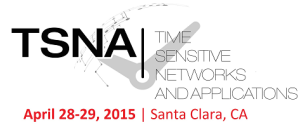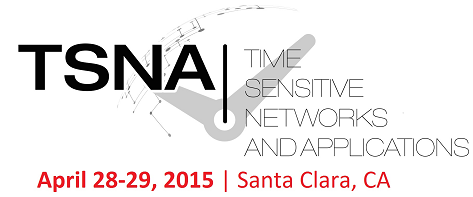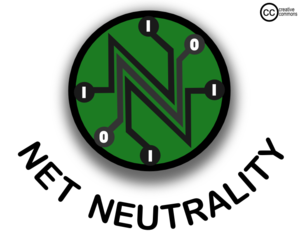 If you’re one of my regular readers, or someone that’s ever spoken to me at an industry event in the last eighteen months, then you knew this was going to happen. Over the last two days I have been attending the Time-Sensitive Networks and Applications conference in Santa Clara, CA hosted by the AVnu Alliance. While AVnu is well known in the audio visual industry for the development and creation of the AVB, now starting to be referred to as TSN (time-sensitive networks), I couldn’t help but ask those at the higher levels of AVnu, as well as other attendees, about the impact of the FCC’s net neutrality rules on the future development and implementation of the IEEE 802.1 standard.
If you’re one of my regular readers, or someone that’s ever spoken to me at an industry event in the last eighteen months, then you knew this was going to happen. Over the last two days I have been attending the Time-Sensitive Networks and Applications conference in Santa Clara, CA hosted by the AVnu Alliance. While AVnu is well known in the audio visual industry for the development and creation of the AVB, now starting to be referred to as TSN (time-sensitive networks), I couldn’t help but ask those at the higher levels of AVnu, as well as other attendees, about the impact of the FCC’s net neutrality rules on the future development and implementation of the IEEE 802.1 standard.
Over the two days I found multiple opportunities to bring up the subject matter with Greg Schlechter, the Marketing Workgroup Chair of the AVnu Alliance, and see where he felt AVnu belonged in the conversation. I can’t help but say I was a little disappointed when both he and the pro AV segment chair, Patrick Prothe, both took the philosophy, “that’s policy, not technology.”
The AVnu Alliance is all about creating and writing the protocols for Time-Sensitive Networks and the certification standards that are then required for any of the devices that intend to reside on that network. Most commonly associated with commercial audio products, there are other industries that saw the need for time-sensitive networking topology, like automotive and industrial manufacturing, that have now joined the fold to add to the work force and development group that is moving this new part of IEEE 802.1 forward.
To get back to how all this applies to the net neutrality rules, though, you have to first think about what the need for a time-sensitive network is all about. In the AV industry, the importance of this kind of network protocol is specifically to provide the synchronization capabilities. This might mean synch between audio and video, it might mean synch between a stereo pair of speaker, but either way there must be some form of synchronization. In the industrial world this could be utilized for the large robotic machinery to communicate the control signals and processes as to what should be happening and allow for that to exist as a non-proprietary signal on the network. In both cases the technology exists to perform this task today, but it is always proprietary and AVnu wants to change that with TSN to offer the open source option in order to provide the base code that could potentially allow for true interoperability on the network.
We’re using as an example the systems in the AV industry or the manufacturing space that are communicating on a network that have a vested interest in synchronization of procedures and information. That sounds fantastic, so long as there is never a need leave the LAN and communicate with a device that might reside on the other side of an Internet Service Provider (ISP).
These networks are set up specifically because the ability for time synchronization was such a priority. But what about when they might need to have communication between plants in different cities, states, or even on different continents? There will be ISPs involved. According to the current FCC Open Internet regulations, these signals would be considered an application level procedure. As such, they will not be protected under the Title II regulations and will therefore be susceptible to being blocked, throttled, or forced paid prioritization by the ISPs – so much for that synchronization unless you pay the added costs!
To the credit of the gentlemen from the AVnu Alliance, it is their domain to develop the standards by which these time-sensitive networks will operate and pass signals. They were not formed to be the voice for the industries they partner with on a policy level. Schlechter even went so far as to say that in the AV space that should be the role of organizations like InfoComm International, CEDIA, and the CEA helping to protect our interests at a policy level. (He definitely won’t get an argument out of me on that point.)
In the end, though, it comes down to the simple principle of money. Time-sensitive networks are in their infancy of implantation and adoption. It’s going to take a while to start to see them in wide spread use across multiple industries; especially ones that are generating the kinds of dollars that make politicians turn their heads. But as the adoption, and the amount of dollars invested, increases, there will be a point where the industrial part of the AVnu Alliance will likely require the current policy to be changed or new policies to be created.
Our current net neutrality regulations will take effect as of June 12, 2015. It will be very interesting to see just how long they last once people realize what is actually written into them, assuming there aren’t further changes with the lawsuits from the telecom companies being filed almost weekly.



